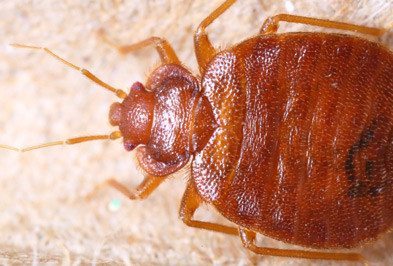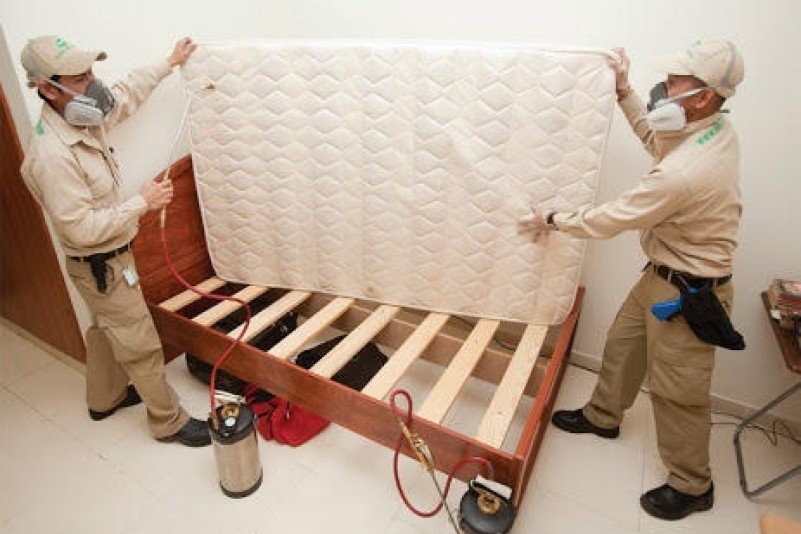Local Bed Bug Exterminator: DC Heat Treatment Services Available
Wiki Article
Checking Out the Science Behind Bed Insect Heat Treatments as a Lasting Pest Monitoring Approach
One such approach that has obtained traction in current years is the usage of warmth treatments to combat bed pest problems. The details of exactly how warm efficiently gets rid of bed insects and the more comprehensive ramifications for sustainable bug monitoring practices make this a subject worth exploring even more.Bed Insect Heat Therapy Refine

Thermal Death Factor for Bed Bugs
Revealing bed bugs to elevated temperatures past their thermal tolerance variety is critical for achieving effective eradication in warm therapy procedures. The thermal fatality point for bed bugs refers to the temperature level at which these bugs can not survive. Study shows that bed pests begin to perish when subjected to temperature levels above 113 ° F(45 ° C) for a sustained period. As the temperature enhances, so does the death rate of bed pests. At around 118 ° F(48 ° C ), bed insects start to die rapidly, with a death price of virtually 99% within minutes of direct exposure. This shows the level of sensitivity of bed bugs to heats and highlights the efficiency of warmth therapies in eliminating infestations. By getting to and preserving temperatures over the thermal fatality factor for bed insects, parasite administration experts can ensure comprehensive removal of bed pest populations, consisting of hard-to-reach locations where chemical therapies may be much less effective. Recognizing the thermal fatality point for bed pests is vital for carrying out successful heat treatment approaches and accomplishing sustainable pest monitoring outcomes.Advantages of Warm Treatments
Having actually established the essential thermal death factor for bed bugs, it is important to currently explore the considerable benefits that heat treatments offer in successfully eradicating these durable pests. One of the key advantages is that warm can permeate deep into crevices and Check Out Your URL cracks where bed pests conceal, making certain that even the most hard-to-reach areas are heated up to deadly temperatures.Additionally, warmth therapies are environmentally friendly and non-toxic, making them a sustainable insect monitoring approach. Unlike chemical pesticides, warmth treatments do not leave hazardous residues that can posture risks to human health or the environment. This element is especially crucial in delicate atmospheres such as health centers, colleges, and residential areas where chemical use may not be desirable.
Additionally, heat treatments have a high success price in removing bed pest infestations in a solitary treatment, decreasing the requirement for several brows through and minimizing disruption to occupants. This effectiveness not only saves time and money but also provides assurance to those dealing with bed pest troubles.
Performance of Warm Treatment

Warmth treatments have actually the included advantage of killing bed insect eggs, which are often resistant to conventional chemical treatments. Generally, the effectiveness of heat therapies in removing bed bug infestations makes them a lasting and trusted pest management method.
Sustainable Insect Administration Conveniences
Executing sustainable bug monitoring methods supplies lasting advantages for both the environment and public health and wellness. By utilizing approaches such as heat therapies for insect control, we can decrease the dependence on hazardous chemical pesticides that can have unfavorable effects on communities and human health and wellness - DC exterminator. Lasting pest management approaches assist in preserving biodiversity by targeting particular pests without hurting non-target microorganisms, therefore keeping a balanced ecological community
Additionally, lasting parasite administration techniques add to the overall health and wellness of the public. By decreasing exposure to poisonous chemicals used in standard bug control approaches, warmth treatments provide a safer choice for pest monitoring in residential, business, and public areas. This decrease in chemical use likewise aids in preventing chemical deposits from infecting water, air, and soil, guarding environmental high quality.
Conclusion
In verdict, bed insect heat treatments have been shown to be a effective and sustainable insect monitoring method. The thermal fatality i loved this point for bed insects makes them prone to heat treatments, which have various benefits over traditional chemical therapies. The effectiveness of heat treatments in removing bed pest infestations while lessening environmental effect highlights the possibility of this method as a lasting solution for parasite control.The bed insect warm therapy process entails increasing the temperature useful site within ravaged areas to a degree that effectively removes bed pests and their eggs. By getting to and keeping temperature levels over the thermal fatality factor for bed insects, insect administration specialists can ensure extensive removal of bed insect populations, including hard-to-reach areas where chemical therapies might be less effective. One of the key advantages is that warm can pass through deep into splits and gaps where bed bugs hide, ensuring that also the most hard-to-reach locations are heated to dangerous temperature levels. Unlike chemical treatments that may leave behind immune populations, warmth therapies provide a ecologically friendly and safe remedy that can pass through deep into furniture, walls, and other hard-to-reach locations where bed insects hide.
The thermal death factor for bed insects makes them susceptible to warm treatments, which have numerous benefits over traditional chemical treatments.
Report this wiki page